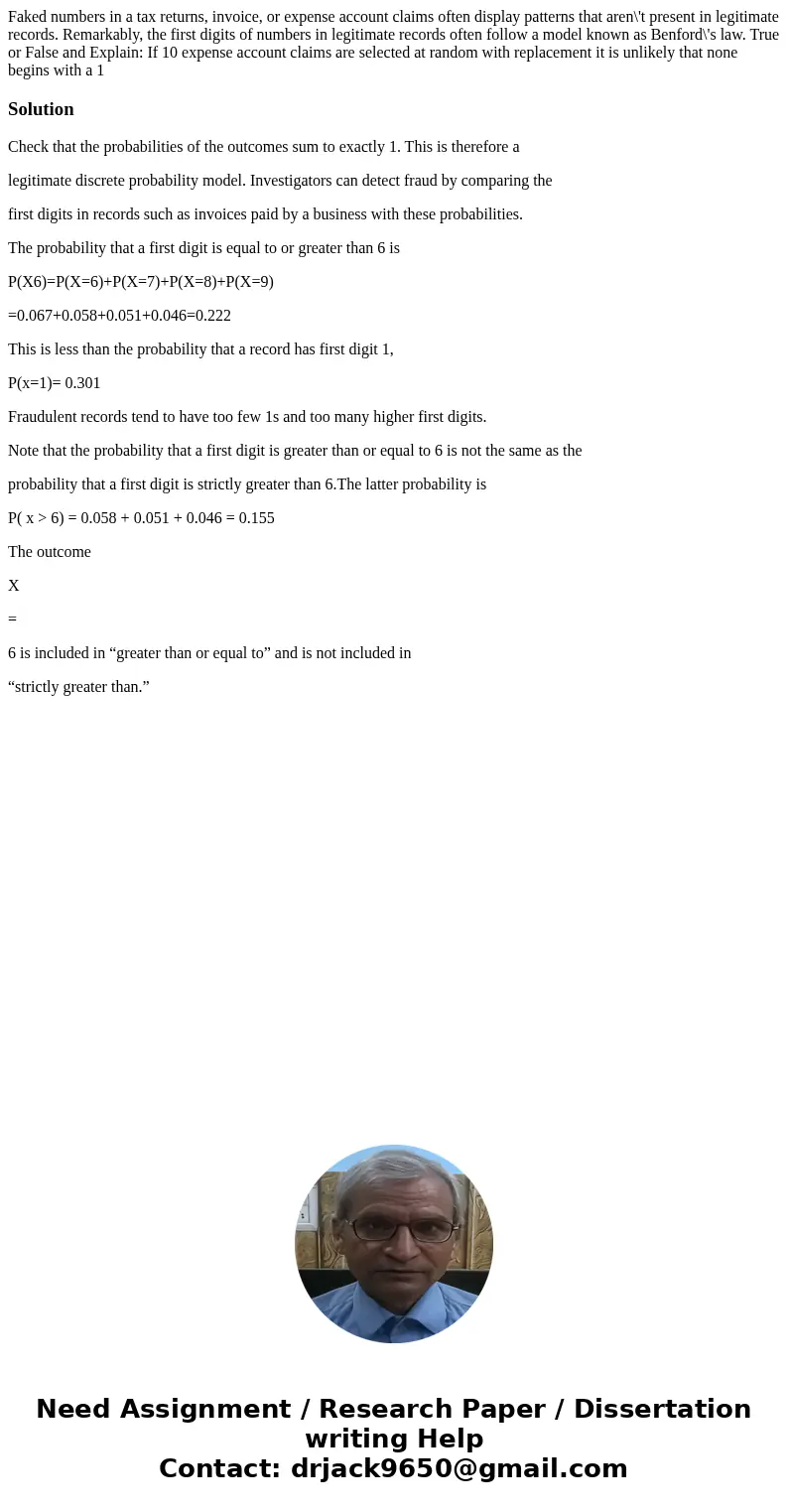Faked numbers in a tax returns invoice or expense account cl
Solution
Check that the probabilities of the outcomes sum to exactly 1. This is therefore a
legitimate discrete probability model. Investigators can detect fraud by comparing the
first digits in records such as invoices paid by a business with these probabilities.
The probability that a first digit is equal to or greater than 6 is
P(X6)=P(X=6)+P(X=7)+P(X=8)+P(X=9)
=0.067+0.058+0.051+0.046=0.222
This is less than the probability that a record has first digit 1,
P(x=1)= 0.301
Fraudulent records tend to have too few 1s and too many higher first digits.
Note that the probability that a first digit is greater than or equal to 6 is not the same as the
probability that a first digit is strictly greater than 6.The latter probability is
P( x > 6) = 0.058 + 0.051 + 0.046 = 0.155
The outcome
X
=
6 is included in “greater than or equal to” and is not included in
“strictly greater than.”

 Homework Sourse
Homework Sourse